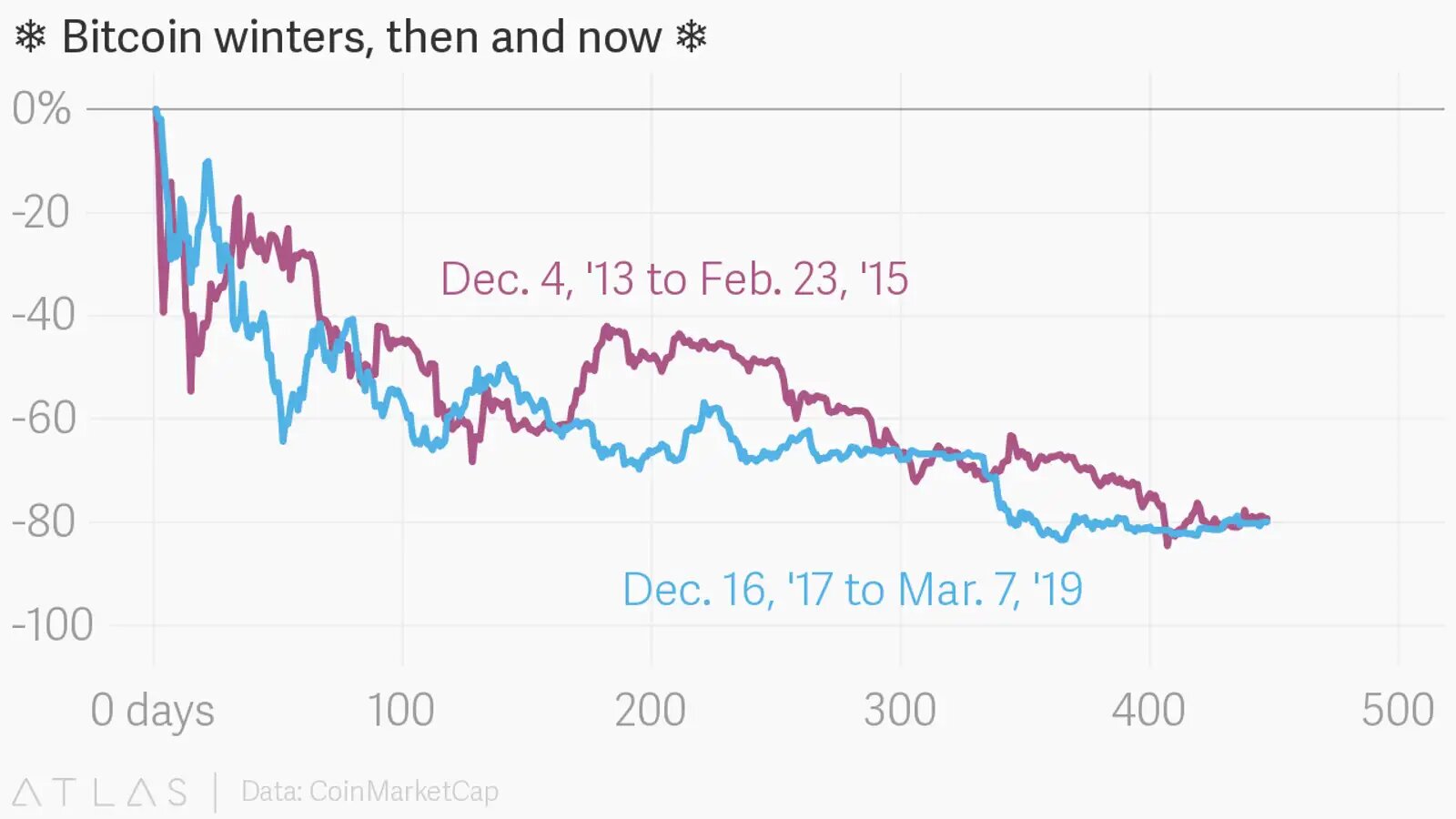Introduction
Cryptocurrency has gained immense popularity in recent years, attracting investors from all over the world. However, with its increasing prominence, a phenomenon known as FUD has also emerged. FUD, an acronym for Fear, Uncertainty, and Doubt, is a term that has permeated the crypto space and has a significant impact on the market.
When it comes to cryptocurrency, FUD refers to the spread of negative or misleading information designed to create fear and doubt in the minds of investors. This misinformation can range from baseless rumors about a project’s failure to exaggerated claims about the risks associated with specific digital assets.
The origins of FUD can be traced back to the traditional finance industry, where it was used as a tactic to manipulate stock prices and sway investor sentiment. However, in the context of cryptocurrency, FUD has taken on a whole new level of significance due to the decentralized nature of the market and the absence of formal regulatory frameworks.
One of the reasons FUD has become so prevalent in the crypto space is the high level of volatility that is inherent in the market. Cryptocurrency prices can fluctuate rapidly, often in response to news and market sentiment. This volatility creates an environment in which FUD can spread quickly and have a powerful impact on investor behavior.
Furthermore, the anonymous nature of online platforms and social media has made it easier for individuals and groups to spread FUD without repercussions. False or misleading information can be shared widely within moments, potentially causing panic and leading to significant price swings.
The impact of FUD on the cryptocurrency market can be far-reaching. It can cause panic selling, leading to sharp declines in prices. Additionally, it can undermine the credibility and reputation of legitimate projects, potentially affecting their long-term viability.
In the next section, we will explore how FUD spreads in the crypto space and the tactics used in FUD campaigns. Understanding these dynamics is crucial for recognizing and overcoming FUD in order to make informed investment decisions.
Definition of FUD
FUD stands for Fear, Uncertainty, and Doubt, and it is a term commonly used in the cryptocurrency community. FUD refers to the deliberate spread of negative or misleading information in order to create fear and doubt among investors. The goal of FUD is to manipulate market sentiment, provoke panic selling, and ultimately drive down the prices of cryptocurrencies.
Fear is an emotion that can cloud judgment and lead to rash decision-making. By instilling fear in investors, FUD campaigns aim to create a sense of urgency and pressure them into selling their holdings. Uncertainty and doubt, on the other hand, can cast doubt on the future prospects of a project or cryptocurrency, making investors hesitant to invest or causing them to divest their current holdings.
It’s important to note that FUD is often based on misinformation, rumors, or exaggerations. FUD spreaders may take advantage of vulnerabilities and weaknesses within the crypto market, exploiting them to sow seeds of doubt among investors. These individuals or groups typically have vested interests, such as short-selling positions or competing projects, and use FUD as a means to gain a competitive advantage.
Examples of FUD in the cryptocurrency ecosystem include spreading rumors of regulatory crackdowns, security vulnerabilities in wallets or exchanges, or claims of fraudulent activity within a project. FUD campaigns can be orchestrated through various channels, including social media platforms, forums, and news outlets, amplifying the impact and reach of the misinformation.
It is worth mentioning that not all negative news or skepticism about a project or cryptocurrency should be classified as FUD. Healthy skepticism and critical analysis are important in any investment space. However, FUD specifically refers to the intentional dissemination of misleading or false information for manipulative purposes.
In the following sections, we will explore the origins and use of FUD in the cryptocurrency space, as well as how it spreads and its impact on the market. Recognizing and overcoming FUD is essential for investors to make informed decisions and navigate the volatile world of cryptocurrency.
Origins and Use in Cryptocurrency
The origins of FUD can be traced back to the traditional finance industry, where it was used as a strategic tool to manipulate stock prices and sway investor sentiment. However, with the advent of cryptocurrencies and the decentralized nature of the market, FUD has taken on a new level of significance.
In the early days of cryptocurrency, FUD was primarily used as a means to attack competing projects or discredit certain digital assets. This often took the form of spreading false information about technological flaws, security vulnerabilities, or regulatory concerns. By creating doubt and uncertainty around a project, FUD spreaders aimed to gain a competitive advantage for their own investments or projects.
As the crypto market grew and gained mainstream attention, FUD evolved to target the broader market sentiment and investor behavior. FUD campaigns began to focus on creating fear and panic, aiming to trigger mass sell-offs and drive down prices. This, in turn, would allow FUD spreaders to buy at lower prices and profit from the subsequent recovery.
Moreover, the advent of social media and online forums has made it easier than ever for FUD to spread rapidly and reach a wide audience. Individuals or groups with malicious intentions can easily create fake accounts, spread false narratives, and escalate fear and uncertainty within the community.
FUD is also used as a means of market manipulation by those with significant holdings of a particular cryptocurrency. By spreading negative rumors or false information about a project, these individuals or groups aim to create panic and cause other investors to sell their holdings, driving down the price. This allows them to then buy back at a lower price and increase their own holdings, creating an artificial price drop and subsequent rebound.
It is crucial to understand that FUD can be employed by both external actors and internal members of the cryptocurrency community. Competing projects, disgruntled investors, or even members of the development team itself can engage in FUD campaigns to gain a competitive advantage or manipulate market sentiment.
In the next sections, we will delve deeper into how FUD spreads and its impact on the cryptocurrency market. Understanding these dynamics is essential for investors to recognize and counteract FUD, allowing for more informed decision-making.
How FUD Spreads
FUD spreads like wildfire in the cryptocurrency community, fueled by various factors and channels that facilitate its rapid dissemination. Understanding the mechanisms by which FUD spreads is crucial in order to identify and mitigate its impact on investor sentiment and market stability.
Social media platforms play a significant role in the spread of FUD. Twitter, Telegram, Reddit, and other online forums provide a fertile ground for the sharing of information, both true and false. FUD spreaders take advantage of these platforms to create fake accounts or masquerade as influential figures in the crypto space, amplifying their reach and authority.
Once a FUD campaign is initiated, it can quickly gain traction through the viral nature of social media. Likes, shares, and retweets ensure that the misinformation spreads to a wider audience, making it challenging for individuals to discern fact from fiction amidst the noise. Proliferation of false narratives only serves to heighten fear and uncertainty, further intensifying the impact of FUD on the market.
News outlets also play a crucial role in the spread of FUD. Sensational headlines and clickbait articles can easily catch the attention of unsuspecting readers, leading to the dissemination of misleading information. Since the crypto space is still relatively new and evolving, accurate and unbiased reporting can be hard to find, making it essential for investors to seek multiple credible sources before making decisions based on news articles.
FUD spreaders often exploit the vulnerabilities and uncertainties that are inherent in the cryptocurrency market. For instance, regulatory announcements, security breaches, or critical vulnerabilities within projects create ideal conditions for FUD to proliferate. Even legitimate concerns or criticisms can be exaggerated or distorted to perpetuate FUD and manipulate market sentiment.
Additionally, FUD campaigns may target specific events, such as cryptocurrency conferences or major project announcements, to undermine positive sentiments and disrupt the market. By strategically timing the release of negative or misleading information, FUD spreaders aim to maximize their impact and exploit market reactions.
Online communities dedicated to cryptocurrencies provide fertile ground for the spread of FUD as well. Forums and chat groups allow for the rapid exchange of ideas and information, but they are also susceptible to the influence of FUD spreaders. Manipulating discussions, creating false narratives, and infiltrating community channels are tactics employed to amplify FUD and sway investor sentiment.
In the following sections, we will explore the impact of FUD on the cryptocurrency market and the psychological tactics used in FUD campaigns. By understanding these dynamics, investors can equip themselves with the knowledge and tools necessary to recognize and overcome FUD.
Impact on the Market
FUD campaigns have a profound impact on the cryptocurrency market, affecting investor sentiment, market stability, and even the long-term viability of projects. Understanding the consequences of FUD is crucial for investors to make informed decisions and navigate the market with confidence.
One of the most immediate impacts of FUD is the erosion of investor confidence. When negative or misleading information is spread, it creates fear and uncertainty among investors, leading to a loss of trust in the market. This loss of confidence can trigger panic selling, causing a sharp decline in cryptocurrency prices. As prices plummet, this further reinforces the fear and panic, fueling a cycle of selling and contributing to market volatility.
FUD can also have long-lasting effects on the reputation and credibility of projects. Rumors and false information can tarnish a project’s image, leading to questions about its validity and trustworthiness. This can deter potential investors or partners, impacting the project’s ability to secure funding or form partnerships critical for its growth. Additionally, if a project is unable to address or refute FUD effectively, it may struggle to regain the trust of the crypto community and recover its market value.
Furthermore, FUD campaigns can disrupt the broader crypto market. The interconnected nature of cryptocurrencies means that negative sentiment towards one project can spill over and affect the entire market. This contagion effect can cause widespread sell-offs and price declines across different cryptocurrencies, even those that are not directly associated with the FUD campaign. As a result, innocent projects and investors can suffer collateral damage due to the actions of FUD spreaders.
The impact of FUD is not limited to retail investors. Institutional investors, who often have significant holdings and influence in the market, are not immune to the effects of FUD. Institutional investors tend to rely on market sentiment and technical analysis to inform their trading decisions. Therefore, when FUD spreads and sentiment turns negative, it can impact the trading strategies of institutions, exacerbating volatility and leading to further market turbulence.
It is essential for investors to be aware of the impact FUD can have on the market and exercise caution when making investment decisions. By taking the time to thoroughly research and verify information, investors can avoid falling victim to the manipulative tactics of FUD spreaders. Additionally, staying informed about the latest developments in the market and seeking advice from trusted sources can help mitigate the negative impact of FUD on investment portfolios.
In the next section, we will explore the tactics employed in FUD campaigns, shedding light on the strategies used by FUD spreaders and how to recognize and overcome them.
Tactics Used in FUD Campaigns
FUD campaigns employ a range of tactics to spread fear, uncertainty, and doubt in the cryptocurrency community. These tactics are designed to manipulate investor sentiment, create panic, and drive down prices. Recognizing these strategies is essential for investors to navigate the market and make well-informed decisions.
One common tactic used in FUD campaigns is the spreading of false or misleading information. FUD spreaders may create fake news articles, forge documents, or use selective quoting to distort the truth and amplify negative narratives. By presenting information in a way that supports their agenda, FUD spreaders aim to manipulate market sentiment and provoke fear among investors.
Another tactic employed by FUD spreaders is the use of exaggeration or hyperbole. By overemphasizing the risks and shortcomings of a project or cryptocurrency, they aim to instill doubt and uncertainty in the minds of investors. This can lead to a skewed perception of the project’s true value and potential, causing investors to hesitate or divest their holdings.
Manipulating market sentiment is a primary objective of FUD campaigns, and one way to achieve this is by targeting influential figures in the cryptocurrency community. FUD spreaders may try to discredit prominent individuals or influencers by spreading false information about their involvement in fraudulent activities or their inappropriate influence on the market. By undermining the credibility of these figures, FUD spreaders aim to erode trust and manipulate investor sentiment.
Timing is another crucial aspect of FUD tactics. FUD spreaders often choose to release negative information or spread rumors during critical moments, such as during major project announcements or cryptocurrency conferences. By strategically timing the release of FUD, they can maximize their impact and create a sense of urgency or panic among investors. The goal is to provoke impulsive reactions and induce panic selling, leading to price declines.
Exploiting existing vulnerabilities or weaknesses within the cryptocurrency market is also a common tactic used in FUD campaigns. FUD spreaders may target areas such as regulatory uncertainty, security concerns, or technological flaws to amplify fear and uncertainty. By highlighting these vulnerabilities, they aim to make investors question the stability and long-term prospects of cryptocurrencies, leading to negative sentiment and potential market decline.
FUD spreaders often leverage social media platforms and online forums to amplify their narratives. They may create fake accounts, impersonate well-known individuals, or artificially inflate negative sentiment through orchestrated campaigns. By contributing to discussions, spreading rumors, and engaging with unsuspecting community members, they aim to control the narrative and influence market sentiment.
Recognizing these tactics and staying vigilant is pivotal in navigating the crypto market. Investors should take the time to verify information from multiple credible sources, use critical thinking when assessing the validity of claims, and be cautious of FUD campaigns that attempt to manipulate their emotions and decisions.
In the next section, we will explore how investors can recognize and overcome FUD to make well-informed investment decisions.
Recognizing and Overcoming FUD
Recognizing and overcoming FUD is crucial for investors to make informed decisions and navigate the volatile cryptocurrency market. By staying vigilant and employing certain strategies, investors can protect themselves from falling victim to manipulative tactics and misinformation.
One of the first steps in recognizing FUD is to be skeptical of sensationalist headlines and exaggerated claims. Take the time to critically analyze the information presented and consider multiple credible sources before making decisions based on the news. Look for evidence, facts, and verifiable data that support or refute the claims being made.
Educating oneself about the technology and fundamentals behind a project or cryptocurrency is also essential. By understanding the intricacies of the industry, investors can better discern legitimate concerns from baseless FUD. Stay informed about the latest developments, follow reputable industry influencers, and engage in discussions with the crypto community to gain different perspectives.
Additionally, it is important to be aware of the motivations behind FUD spreaders. Consider whether there is a vested interest involved, such as competing projects or individuals with short-selling positions. Assess the credibility and reputation of the sources of information. Look for red flags, such as anonymous accounts or individuals with a history of spreading misinformation.
Utilize tools and platforms that provide reliable data and analysis to gain a comprehensive view of a project or cryptocurrency. Technical analysis, market indicators, and metrics can help separate genuine market trends from FUD-induced price movements. Platforms that aggregate news from multiple sources and provide unbiased analysis can also be valuable in countering FUD.
Building a network of trusted sources and advisors is another effective strategy for overcoming FUD. Engage with the crypto community, participate in discussions, and surround yourself with knowledgeable individuals who can provide insights and perspectives. Collaborating with others and seeking diverse opinions can help identify and debunk FUD campaigns.
Lastly, it’s crucial to maintain an objective and rational mindset when making investment decisions. Do not make impulsive choices based solely on fear or panic induced by FUD. Take the time to thoroughly analyze the potential risks and rewards of an investment, considering both the short-term and long-term implications. A solid investment strategy based on sound research and analysis can help mitigate the influence of FUD.
By staying informed, skeptical, and discerning, investors can distinguish between genuine concerns and attempts to manipulate market sentiment. Overcoming FUD requires a proactive approach, continuous learning, and a critical mindset. By doing so, investors can navigate the cryptocurrency market with more confidence and make informed decisions that align with their investment goals.
Conclusion
FUD, or Fear, Uncertainty, and Doubt, is a pervasive phenomenon in the cryptocurrency market. It refers to the deliberate spread of negative or misleading information with the aim of manipulating investor sentiment and provoking panic selling. FUD can have a profound impact on the market, leading to price volatility, erosion of trust, and long-lasting repercussions for projects and investors.
Recognizing and overcoming FUD is essential for investors to navigate the cryptocurrency market successfully. By staying vigilant and employing strategies such as critical analysis, seeking multiple credible sources, and educating oneself about the technology and fundamentals behind projects, investors can protect themselves from falling victim to FUD campaigns. It is also important to be aware of the motivations of FUD spreaders and to utilize reliable data and analysis tools to gain a comprehensive view of the market.
Building a network of trusted sources and advisors, as well as maintaining an objective and rational mindset, are crucial in overcoming FUD. By collaborating with others, seeking diverse perspectives, and making investment decisions based on thorough research and analysis, investors can make informed choices and mitigate the influence of FUD.
The cryptocurrency market is still relatively young and evolving, making it susceptible to the impact of FUD. However, by arming themselves with knowledge, critical thinking, and a cautious approach, investors can navigate the market with more confidence and minimize the disruptive effects of FUD on their investment decisions.
It is essential for both individual investors and the cryptocurrency community as a whole to stay vigilant, debunk false narratives, and promote accurate and reliable information. By doing so, we can foster a more transparent and resilient crypto ecosystem that empowers individuals to make well-informed decisions and contributes to the long-term success of the market.

























